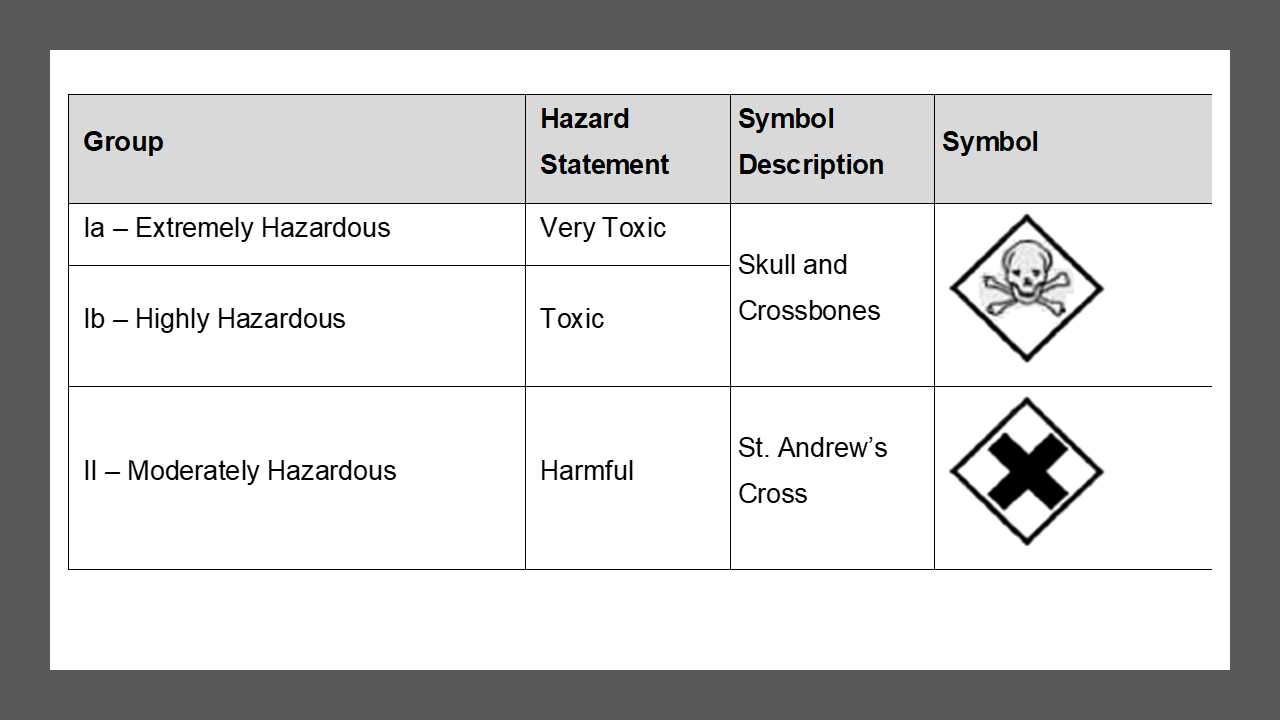Pesticides are chemicals used to control pests. The three main categories of pesticides are insecticides, herbicides and fungicides. Herbicides are used for the control of problem plants, insecticides to control problem insects or plant pests and fungicides are used to control fungi causing plant diseases. Q Pesticide registration All pesticides must be registered under the regulations of Act 36 of 1947, which is the Fertilisers, Farm Feeds, Agricultural Remedies and Stock Remedies Act, governed by the National Department of Agriculture. Before a pesticide can become commercially available to the public (farmer) it must undergo the registration process which involves submitting data on the composition, toxicology, pharmacology, efficacy and phytotoxic to the Registrar of Act 36. Trials in which data is generated must be carried out according to guidelines set out by the office of the Registrar.
The results must show that the pesticide does control the pest against which it is aimed under a range of environmental conditions before registration is granted as well as results showing that the compound will not adversely affect the health of operators and the environment.
Reading the Label
The registration process has specific requirements for information that should appear on the label.
The label is viewed as a legal document and must show:
- the method of application
- the recommended dosage
- the application volume per hectare
- the precautionary steps to be taken during mixing and spraying to avoid health effects,
- the measures to be taken to avoid environmental contamination.
The importance of the label on a pesticide container and the information it contains cannot be overemphasised. Read the label before the container is opened and adhere to it. It is technically an offence to use or recommend the use of an agricultural remedy for any purpose or in any other manner than that specified on the label of the container. A pesticide label has a centre panel flanked by two side panels to cater for multilingual labels. Each group of pesticides is identified by a coloured square in the top right-hand corner of the centre panel next to the product’s name. A colour band at the bottom of the centre panel indicates the hazard group. The label also contains one or more pictograms placed within the coloured band. These are used to communicate important safety information to the user. Three kinds of pictograms are used, those giving Advice those giving Warnings and those giving Information as to the correct handling and application of the product. The label further contains the trade name, the registration number (L number followed by Act 36/1947), the name of the active ingredient and its concentration in the formulation as well as the formulation type. In addition the label states the name, address and telephone number of the registration holder as well as the batch number, the manufacturing date and expiry date. The instructions for use such as dosage rate, the recommended volume per hectare, compatibility and registered tank mixes.
Coding of Chemicals
Colour codes, symbols and pictograms are used on the product labels of all chemicals to indicate its toxicity and the way it should be handled.
Colour Codes
Colour codes are used to indicate the hazard classification of the chemical. All agricultural chemicals are classified in terms of their toxicity. This information is displayed on the product’s label and informs the user of the potential hazard l if not used in the correct manner.
|
Group |
Group Description |
Hazard Statement |
Colour Band |
|
Ia |
Extremely Hazardous |
Very Toxic |
Red |
|
Ib |
Highly Hazardous |
Toxic |
|
|
II |
Moderately Hazardous |
Harmful |
Yellow |
|
III |
Slightly Hazardous |
Caution |
Blue |
|
IV |
Acute hazard unlikely in normal use |
|
Green |
The above table indicates the terminology used in classifying chemicals according to their potential hazards. This means that chemicals in Group Ia and Ib will be lethal when a very small quantity is swallowed. A much larger quantity of the substance in Group IV is necessary to be lethal.
Symbols

Pictograms
Pictograms are used to indicate the storage requirements for the product, the type of product, the requirements for protective gear and clothing, and the danger that the product holds for animals.
